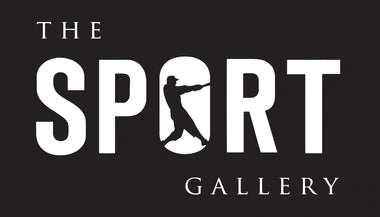You know how some musicians can become even more legendary after death than they were in life? Well that can certainly be the case for sports teams, too. I’ve already talked about the unfailing interest in the Hartford Whalers and their genius logo. Well, there’s another hockey team that never achieved on the ice, and that died, but that's a hit with fans today. I’m talking about – drum roll, please – the California Golden Seals!
Before we get into the Seals and their appeal, we have to address their name. It went through many minor, and arguably irrelevant, changes over their life-span. Born as the San Francisco Seals in 1961, the club were also known as: the California Seals (1966-67), the Oakland Seals (1967-70), the Bay Area Seals (1970), and the California Golden Seals (1970-76).
Alright, we’ve got that down, good. So, the Seals, as mentioned, were founded in 1961. They started as a Western Hockey League franchise before moving to the NHL as part of the 1967 expansion, which doubled the size of the league. The Seals were actually a good team during their WHL days; they won two titles, in 1962-63 and 1963-64, and made the playoffs every year but one. Unfortunately, that success would not carry over to the NHL.
In those early expansion days of the NHL, the Original Six teams and the ‘67 class were split into two divisions. This would guarantee an expansion team a spot in the Stanley Cup Finals. Even with that helping hand, the Seals would never muster much. They made the playoffs in their second and third seasons, but lost in the quarterfinals both times. Outside of that they finished fourth or worse every year, and were cellar dwellers four times.
Before the 1970-71 season, the Seals were purchased by the owner of the Oakland A’s, Charlie O. Finley. This transaction would not lead to wins – the opposite, actually – but Finley did plant some seeds that have bloomed all these years later. The Seals were a green and blue team initially, but Finley swapped blue for a golden yellow, after his A’s. This colour combo was bold, but nothing could measure up to his next move: white skates. The A’s were/are known for their white cleats – so much so that it became part of their “Swingin’ A’s” logo – and thus the Seals had to match. Rumour has it that the team staff had to paint the skates in between innings to keep them bright.
The Seals’ eccentric look is what has stood the test of time – it’s what people in 2019 love about a team that hasn’t played since 1976. As with the Whalers, those who have never heard of the Seals gravitate to their aesthetic. It’s significant considering how bad the team was, and is a testament to the design trends of the ‘70s.
They could have used the support back then, the Seals. Their stay in the Bay didn’t last long. After nine seasons of losing, the still-fledgling NHL club packed up and headed to the Midwest, becoming the Cleveland Barons. They wouldn’t spend much time in their new home either, folding after two years. Well, technically the Barons merged with the existing Minnesota North Stars, though there wasn’t made much of it. What is worth noting, though, is that the owners of the San Jose Sharks franchise actually bought part of the North Stars’ shares, which means there is a wee connection between the Bay’s past and present hockey clubs.
While the Sharks have become popular in their own right, they don’t hold a candle to the Golden Seals in my books. The latter are certainly the more asked-after team here at the gallery, which is significant considering the Sharks debuted in the ‘90s and have been relatively successful. The Seals, though, are a cult classic. They have that great mix of being old yet bold, and have the lovable-loser title to boot. May their unique glory live on forever.



